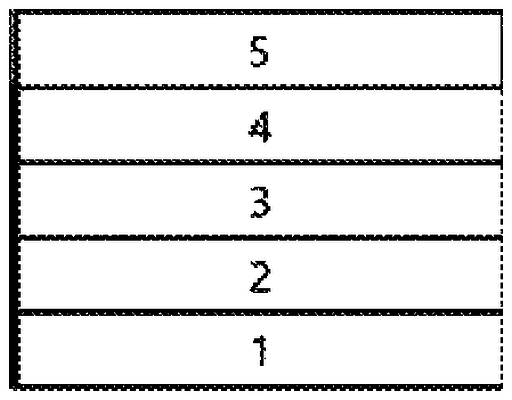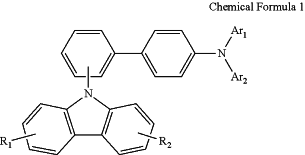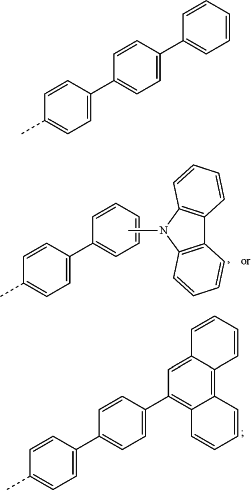| CPC H10K 50/15 (2023.02) [H10K 50/11 (2023.02); H10K 2101/40 (2023.02)] | 9 Claims |

|
1. An organic light emitting device comprising:
an anode;
a hole transport layer comprising a compound of Chemical Formula 1:
 wherein:
R1 and R2 are each independently: hydrogen or a substituted or unsubstituted C6-60aryl:
Ar1 is phenyl, biphenyl-2-yl, biphenyl-4-yl, naphthyl, phenanthrenyl, or naphthyl phenyl; and
Ar2 is phenyl, biphenyl-4-yl, naphthyl, phenanthrenyl, naphthyl phenyl, phenanthrenyl phenyl, 9,9-dimethyl-9H-fluorenyi, 9,9-diphenyl-9H-fluorenyl, 9,9′-spirobifluorenyl,
 a light emitting layer; and
a cathode,
wherein the light emitting layer includes a host and a dopant, and
wherein a difference between a dipole moment value of the compound of Chemical Formula 1 included in the hole transport layer and a dipole moment value of the host in the light emitting layer is 1.0 to 2.0.
|